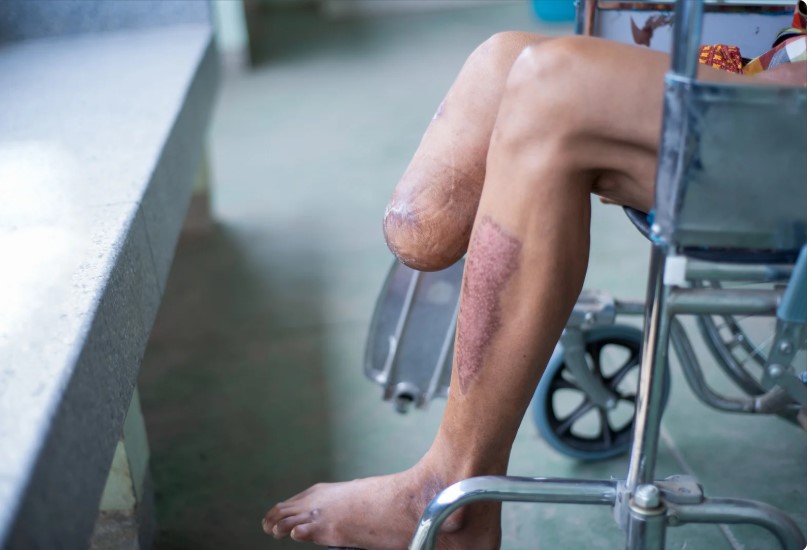Arthritis affects millions worldwide, causing persistent joint pain, fatigue, and stiffness that can significantly disrupt daily life. Whether it’s osteoarthritis or rheumatoid arthritis, understanding the symptoms and treatment options is vital for improving quality of life and maintaining mobility. Early intervention and appropriate arthritis treatment can help control pain, reduce inflammation, and prevent further joint damage.
Understanding Arthritis: Osteoarthritis vs Rheumatoid Arthritis
Arthritis is a broad term for conditions that cause joint inflammation and pain. The two most common types are osteoarthritis (OA) and rheumatoid arthritis (RA), each with distinct causes and characteristics.
Osteoarthritis, often referred to as “wear and tear” arthritis, results from the gradual breakdown of cartilage—the cushioning tissue at the ends of bones. This leads to bones rubbing together, causing pain, swelling, and decreased motion. Osteoarthritis typically affects older adults but can begin earlier due to injury or genetic factors.
Rheumatoid arthritis is an autoimmune disorder where the immune system mistakenly attacks the joint lining (synovium), causing inflammation, swelling, and eventual joint deformity if untreated. RA can affect people of all ages and tends to involve multiple joints symmetrically.
Key symptoms for both types include joint pain, stiffness, especially in the morning, and fatigue. Early-onset arthritis often manifests as difficulty getting out of bed due to stiff joints that gradually loosen as the day progresses. Night pain can also disrupt sleep, further contributing to fatigue.
Common Challenges Faced by Arthritis Patients
Living with arthritis involves more than just managing physical symptoms. Persistent joint pain can limit mobility and reduce the ability to perform everyday tasks, leading to frustration and decreased independence.
Fatigue is another significant issue, often underestimated. The chronic inflammation associated with arthritis drains energy levels, making patients feel tired throughout the day. The stiffness commonly peaks in the morning, making initial movement challenging, but may improve with activity.
Night pain is particularly troublesome, causing frequent awakenings and poor-quality sleep. Sleep disturbances can worsen pain perception and reduce pain tolerance.
Research, including findings by Scopaz et al. (2009), reveals that patients vary widely in how they cope with arthritis pain. Some develop effective coping mechanisms and manage their symptoms well, while others struggle, potentially delaying seeking medical help. Unfortunately, many live with painful joints for years before obtaining treatment, which can worsen outcomes.
Conventional Arthritis Treatment Options
Effective arthritis treatment often requires a multifaceted approach combining medication, physical therapy, and lifestyle changes.
Medications: Nonsteroidal anti-inflammatory drugs (NSAIDs) are commonly prescribed to relieve pain and reduce inflammation. These include over-the-counter options like ibuprofen and naproxen, as well as stronger prescription medications.
For rheumatoid arthritis, disease-modifying antirheumatic drugs (DMARDs) such as methotrexate help slow disease progression by targeting the immune system. Corticosteroids may also be used short-term to control severe inflammation.
Physical Therapy and Exercise: Physical therapy plays a critical role in arthritis treatment by improving joint function and reducing stiffness. Tailored exercises help strengthen muscles around the joints, improve flexibility, and maintain range of motion.
Low-impact aerobic exercises such as swimming, walking, and cycling are beneficial because they increase endurance without stressing the joints. Gentle stretching routines can help reduce morning stiffness.
Lifestyle Changes: Weight management is crucial for osteoarthritis patients because excess body weight increases stress on weight-bearing joints like the knees and hips.
A balanced diet rich in anti-inflammatory foods—such as fruits, vegetables, omega-3 fatty acids from fish, and whole grains—can help reduce inflammation. Avoiding processed foods and sugars is also recommended.
Protecting joints by using ergonomic tools, practicing good posture, and avoiding repetitive stress can prevent further joint damage.
Advanced and Complementary Treatment Approaches
In recent years, advances in arthritis treatment have expanded options for patients who do not respond well to conventional therapies.
Biologic Therapies: Biologics are targeted drugs used mainly for rheumatoid arthritis. These medications block specific immune system components responsible for inflammation. Biologics have transformed RA management by significantly reducing symptoms and slowing joint damage.
Assistive Devices and Braces: Braces, splints, and other assistive devices support weakened joints, improve stability, and reduce pain during activities. Canes and walkers can aid mobility in advanced cases.
Alternative Therapies: Many patients seek complementary treatments such as acupuncture, massage therapy, and supplements like glucosamine and chondroitin sulfate. While scientific evidence varies, some find relief through these methods as part of a comprehensive arthritis treatment plan.
Importance of Early Intervention and Seeking Help
Delaying treatment can lead to irreversible joint damage and chronic disability. Recognizing early arthritis symptoms and consulting a healthcare provider promptly improves the chance of controlling disease progression and preserving joint function.
Early treatment not only reduces pain and stiffness but also improves sleep quality, energy levels, and overall well-being. Patients should seek evaluation if they experience persistent joint pain, morning stiffness lasting over 30 minutes, swelling, or difficulty moving joints.
Rheumatologists specialize in arthritis care and can provide diagnosis, medication management, and guidance tailored to each patient’s needs.
Coping Strategies for Living with Arthritis
Beyond medical treatment, adopting effective coping strategies helps arthritis patients maintain independence and improve quality of life.
Pain Management Techniques: Applying heat packs can relax stiff muscles and reduce joint stiffness, especially in the morning. Cold packs help numb painful areas and reduce inflammation after activity.
Mindfulness practices such as meditation and deep breathing can alleviate pain perception and reduce stress. Relaxation techniques also promote better sleep.
Support Systems: Joining arthritis support groups or counseling can provide emotional support, reduce feelings of isolation, and offer practical tips for managing daily challenges.
Maintaining Daily Activities: Pacing activities to avoid overexertion, breaking tasks into smaller steps, and using ergonomic tools help preserve energy and joint health. Setting realistic goals and celebrating small achievements keep motivation high.
Takeaway
Arthritis treatment is a dynamic process that requires personalized strategies to manage joint pain, fatigue, and stiffness effectively. Whether through medications, physical therapy, lifestyle changes, or advanced therapies, early intervention plays a crucial role in improving outcomes. Recognizing symptoms early and seeking appropriate care can help patients regain mobility, reduce discomfort, and maintain a fulfilling life.
If you or a loved one are struggling with joint pain or stiffness, don’t wait to consult a healthcare provider. Timely arthritis treatment can make all the difference in preserving your joint health and enhancing your quality of life.







